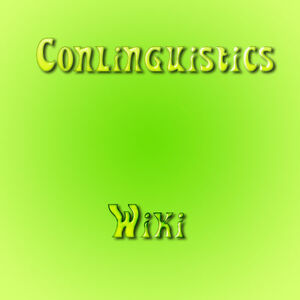Welcome to Conlinguistics
The Conlinguistics Wiki contains essential information on how to create a constructed language, give help on creating one, and explain any relevant linguistical topics that go along with the topic. These pages can help those people who simply want it or those who want help on creating a constructed language, in addition to having all information located at one place so they do not need to look all over internet or try to decipher complex pages with strange vocabulary, along with some descriptions of languages to show as examples.
This wiki currently has very little content and if you are looking for information, Wikipedia's Linguistics Portal is fairly informative.
There are two main sections: nouns and verbs. First of all you must decide whether the language is synthetic, aggluginative, or analytical, and whether there are gendered or numbered nouns. Aggluginative languages are generally easier to construct than synthetic or analytical ones.
For aggluginative languages, decide on the cases, be it nominative, accusative, dative, allative, ablative, locative, instrumental, causative, topical, gentive. For synthetic languages, decide on the same cases above, but include combinations of cases, including plural, singular, double, and male, female, neutral, and first person, second person, third person, though you need not use all. You can also create moods and tenses. It would be generally easier to uses affixes or patterns instead of abnormal verbs.
For analytical languages, come up with a set of auxiliaries representing locative, causative, allative, ablative, topical, instrumental, dative, genitive. Analytical languages tend to have a very fixed word structure. Of course, verbs may still be conjungated like aggluginative and synthetic verbs.
